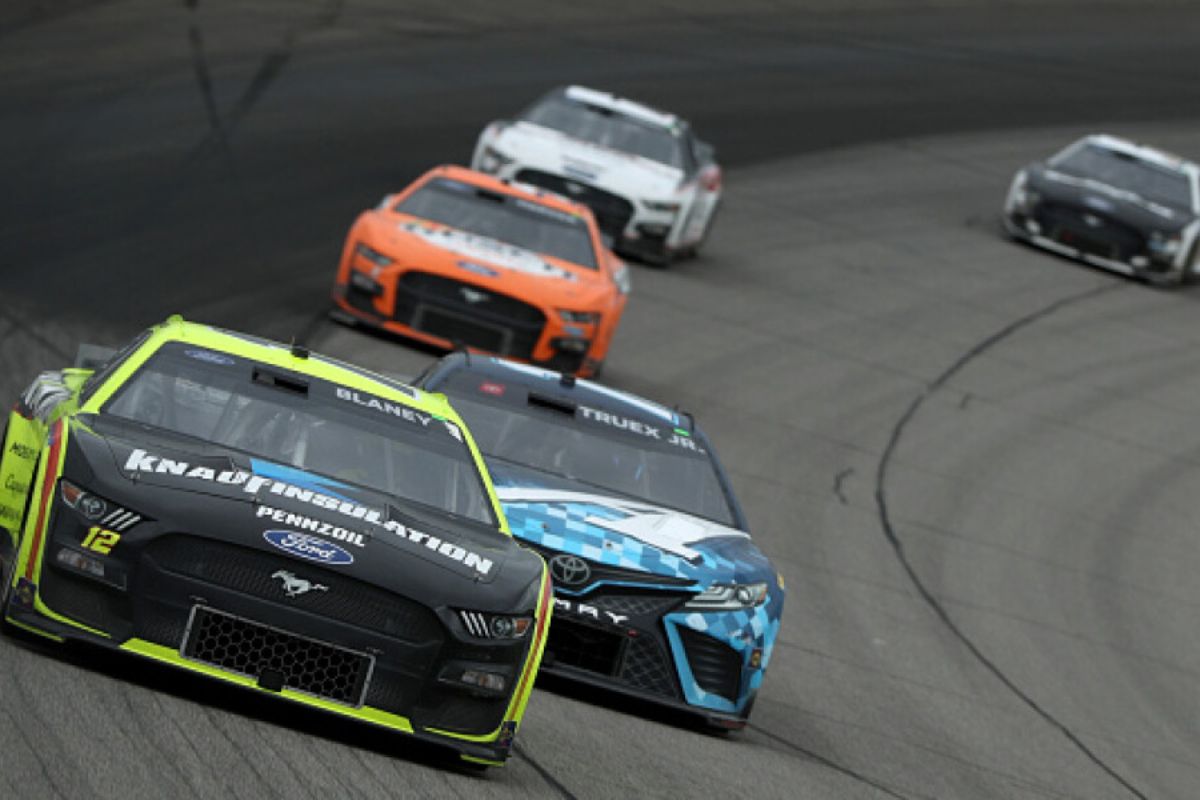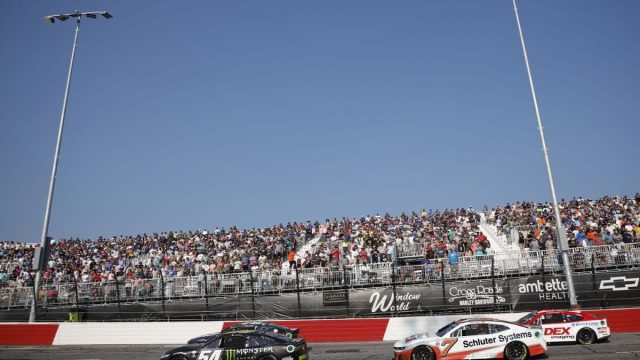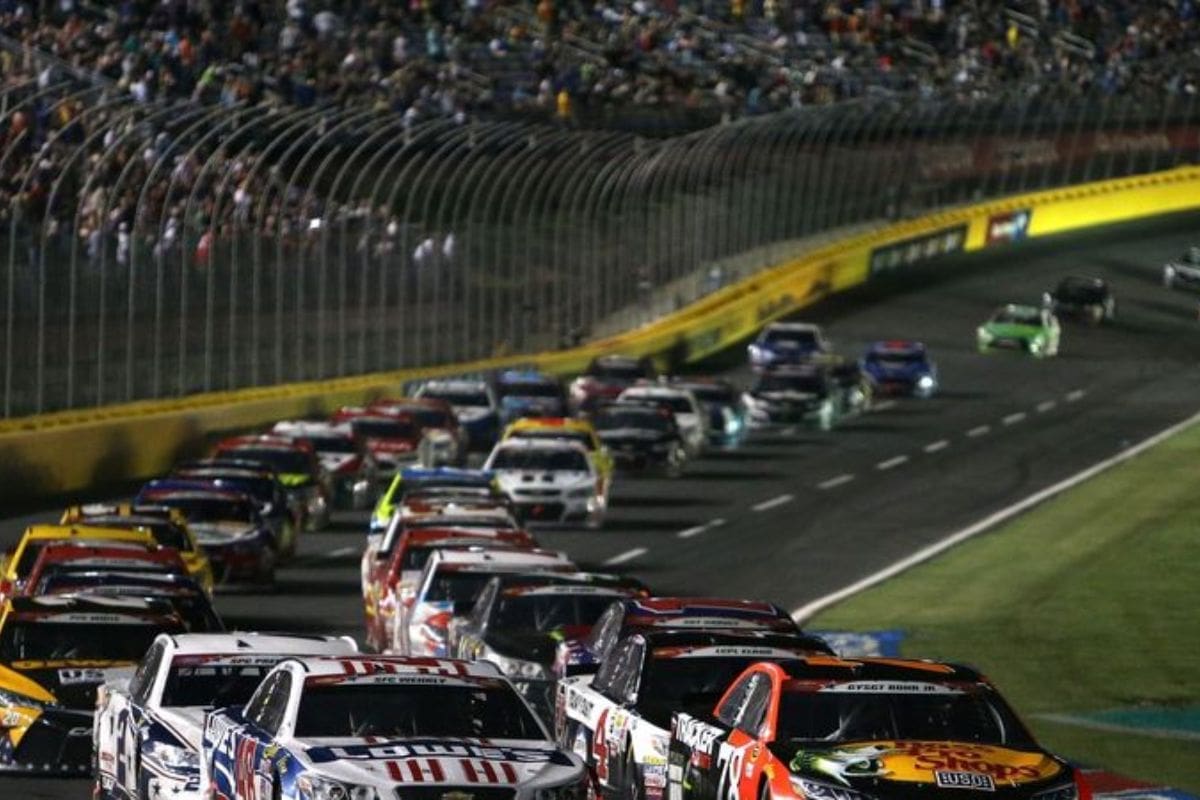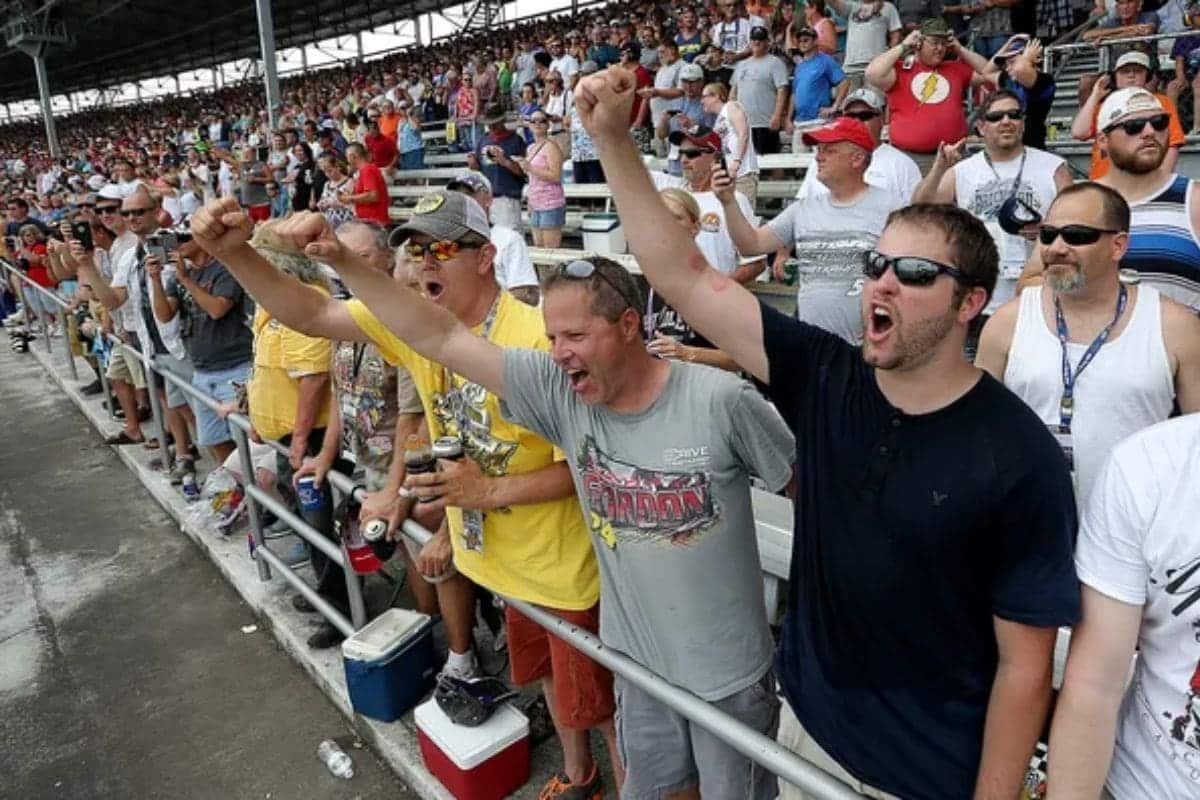North Wilkesboro’s Goodyear Repeat Stirs Concerns: The revival of Goodyear’s ‘Option’ tire at North Wilkesboro has ignited a heated debate within the NASCAR community, with purists voicing concerns about the sport’s potential shift towards IndyCar-like practices. The introduction of multiple tire compounds, a hallmark of series like Formula 1 and IndyCar, has led to a wave of skepticism and criticism among fans who fear that NASCAR’s unique identity may be at risk. As the sport struggles with balancing tradition and innovation, the upcoming Richmond race serves as a critical litmus test for these contentious changes. What implications could this have for NASCAR’s future?
Key Takeaways
- Fans criticize NASCAR’s adoption of multi-compound tires, likening it to IndyCar’s approach.
- North Wilkesboro’s use of ‘Option’ tire faced backlash for complicating race strategies.
- Concerns arise that NASCAR’s essence is diluted by mimicking open-wheel series.
- Historical failures of alternative tire attempts fuel skepticism among fans.
- Mixed results from North Wilkesboro raise doubts about the future of tire innovations in NASCAR.
Introduction and Context
Amid growing concerns within the NASCAR community, the recent focus on tire selection over aerodynamics marks a noteworthy shift in efforts to improve short-track racing experiences.
Historically, NASCAR’s technological adjustments have primarily revolved around aerodynamic packages designed to enrich competition and driver safety. However, the current season has borne witness to a substantial turn, with the use of specialized tires taking center stage.
This shift was clearly visible during the North Wilkesboro race, where the introduction of the Goodyear ‘option’ tire brought a new dynamic to the competition. The Goodyear ‘option’ tire, designed to offer a different grip level compared to the standard tire, was intended to add a tactical element to the race. Its use, however, sparked a wave of discussions and mixed reactions across the NASCAR community.
The decision to prioritize tire technology over aerodynamic changes highlights a broader approach aimed at enriching the short-track racing spectacle. Short tracks, with their unique blend of high-intensity and close-quarter racing, demand a different approach compared to larger speedways. By focusing on tire performance, NASCAR aims to create more overtaking opportunities and varied racing scenarios, which can notably heighten the excitement for fans.
Yet, this shift has not been without its critics. Some within the community express concerns that an over-reliance on tire strategies could overshadow the traditional elements of racing that fans have treasured for decades. The apprehension was visible following the All-Star race, where the introduction of the ‘option’ tire received a lukewarm response from both drivers and enthusiasts alike.
The “Option” Tire Returns
NASCAR’s decision to reintroduce the ‘alternative’ tire at Richmond epitomizes a calculated risk aimed at revitalizing the short-track racing experience despite the mixed feedback from its initial rollout at North Wilkesboro. The announcement, made by Matt Weaver, highlights NASCAR’s dedication to experimenting with tire compounds to enrich race dynamics, even though the previous attempt was met with widespread criticism.
At North Wilkesboro, the experiment with multiple tire compounds produced unexpected results. The varying tire fallout rates caused a commotion, leading to fan dissatisfaction. Many enthusiasts labeled the race as ‘the most monotonous,’ expressing a preference for increased horsepower to reinvigorate short-track racing. This feedback reflects an intersection of fan expectations and NASCAR’s tactical decisions. Nonetheless, NASCAR remains unfazed, believing that the potential benefits of the alternative tire could outweigh the risks involved.
NASCAR will try the multiple tire concept for a points paying race next month at Richmond, the latest attempt to improve NextGen short track racing
Crew chiefs applaud the effort but have mixed thoughts on its viability https://t.co/UIvTI4CpEN
— Matt Weaver (@MattWeaverRA) July 10, 2024
By opting for the same tire compounds at Richmond, NASCAR is reaffirming its hypothesis that diverse tire strategies can infuse unpredictability and tactical depth into races. This daring move highlights the organization’s willingness to iterate and refine its approach, even in the face of adversity.
The stakes are unquestionably high. NASCAR must navigate the delicate balance between maintaining the sport’s traditional appeal and exploring new pathways for excitement. As the engines roar at Richmond, all eyes will be on whether the alternative tire can redeem itself and deliver the thrilling, edge-of-the-seat action fans crave.
Differences in the Upcoming Richmond Race
The upcoming Richmond race presents a unique set of challenges and opportunities, mainly due to the autonomy granted to teams in choosing when to deploy the alternate tire compound. This flexibility could have a notable impact on race strategies, creating a dynamic environment where timing and tactical decisions are crucial.
One of the most notable differences between the Richmond race and the recent North Wilkesboro event is the track surface. Richmond’s aged track is expected to induce greater tire wear, bringing to mind the compelling race at Bristol earlier this season. This wear could lead to more frequent pit stops, increased tire management, and potentially more overtaking opportunities.
- Tire Strategy: Unlike North Wilkesboro, teams at Richmond can decide when to use the alternate tire compound. This autonomy could lead to varied strategies, with some teams opting for early deployment to gain an initial advantage, while others might save it for a late-race push.
- Track Surface: The aged surface of Richmond is known for its abrasive nature, which contrasts sharply with the newly repaved North Wilkesboro. This difference will likely lead to higher tire degradation and could be a decisive factor in race outcomes.
- Race Dynamics: The increased tire wear at Richmond is anticipated to create more on-track action. Drivers will need to balance aggression with conservation, adding layers of complexity to their racecraft.
- Fan Expectations: While the new tire strategy aims to enrich the excitement, fans remain skeptical. They wonder if this approach will truly rejuvenate short-track racing in NASCAR or if it simply mirrors strategies seen in other motorsports like IndyCar and F1.

Fans Bash NASCAR for Copying F1 and IndyCar
While the clever innovations and track conditions at Richmond promise an engaging race, some fans are vocally critical, accusing NASCAR of diluting its essence by imitating F1 and IndyCar approaches. This sentiment is not new but has gained momentum as NASCAR continues to adopt practices that some believe stray from its traditional identity. Fans feel the sport, known for its gritty, grassroots origins, is now mimicking the polished and technologically advanced facets of F1 and IndyCar, thus alienating its core supporters.
One of the major points of contention is the introduction of multiple tire compounds at oval tracks. Fans argue that this approach is out of sync with NASCAR’s heritage. ‘We really have become IndyCar,’ lamented one fan, expressing a broader disillusionment. Another echoed this sentiment, stating, ‘Multiple tire compounds at Ovals are dumb, especially with stage racing. Put them on the RCs. Indycar of all series can get this right.‘
This dissatisfaction is rooted in a belief that NASCAR’s unique appeal lies in its distinctiveness from other motorsports. The following table encapsulates some key differences and similarities between NASCAR, F1, and IndyCar:
| Aspect | NASCAR | F1 | IndyCar |
|---|---|---|---|
| Racing Style | Stock car racing on ovals and road courses | Open-wheel racing mostly on road courses | Open-wheel racing on ovals and road courses |
| Tire Compounds | Traditionally single compound | Multiple compounds | Multiple compounds |
| Audience | Primarily American | Global | Primarily American |
| Innovation Approach | Gradual, fan-centric | Cutting-edge, technology-driven | Balanced between tradition and innovation |
Fans’ Skepticism and Criticism of Option Tires
Amid mounting concerns, fans question whether the introduction of alternative tires will improve the competition or simply complicate the racing dynamics in NASCAR. The skepticism surrounding this shift is visible, with many enthusiasts expressing unease about the tactical complexities that multiple tire types, such as ‘prime,’ ‘alternative,’ and ‘wet,’ introduce to the sport.
This sentiment echoes a broader apprehension that NASCAR might be veering too closely to the racing formats of IndyCar and Formula 1, leading to potential disenchantment among its traditional fan base. One fan articulated a common viewpoint: ‘Just like IndyCar and F1.‘ This reflection encapsulates the fear that NASCAR’s essence—rooted in straightforward, high-adrenaline racing—might be compromised by an overemphasis on tire strategies.
The mixed results at North Wilkesboro, often cited as a failed experiment in implementing alternative tires, further compound these worries. For many, the reintroduction of this approach seems like revisiting a closed chapter with little hope for rekindling short-tracking’s glory days.
- Tactical Overload: The introduction of diverse tire types adds layers of strategy that many believe detract from the pure racing experience.
- Durability Doubts: Questions prevail about whether alternative tires can even last 20 laps without notable performance drop-offs.
- Historical Failures: Past attempts at using alternative tires have not met expectations, casting a shadow over current efforts.
- Perceived Disregard: Fans feel their feedback is ignored, as echoed by one fan who said, ‘NASCAR is like Fox. They don’t listen to the fans’ feedback.’
News in Brief: North Wilkesboro’s Goodyear Repeat Stirs Concerns
The reintroduction of Goodyear’s ‘Option’ tire at North Wilkesboro has ignited notable debate among NASCAR enthusiasts regarding the sport’s potential shift towards practices seen in other racing series such as IndyCar and Formula 1.
The incorporation of multiple tire compounds at oval tracks has led to concerns about the dilution of NASCAR’s traditional identity.
This ongoing discourse highlights the tension between innovation and preserving the core elements that have historically defined NASCAR.


